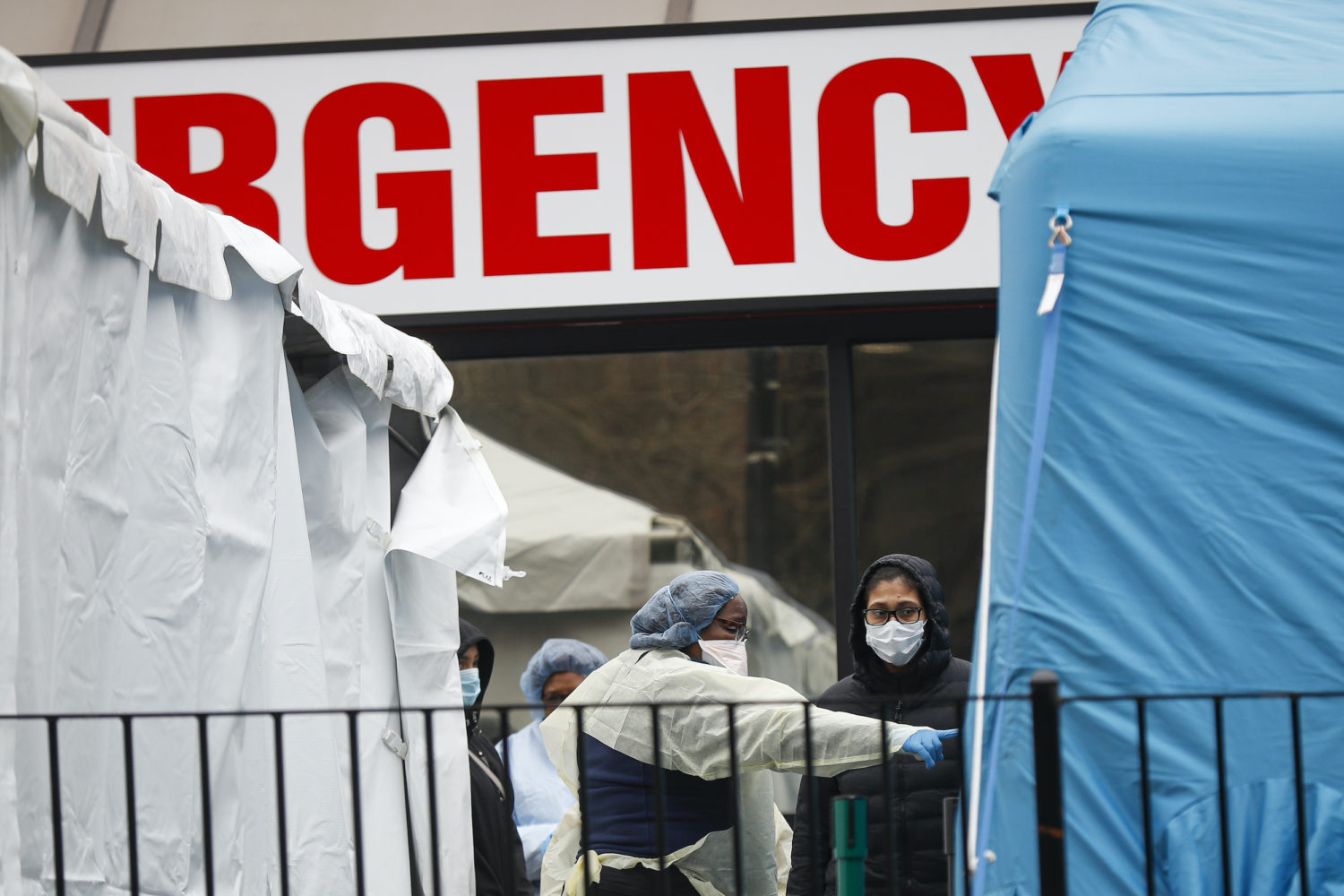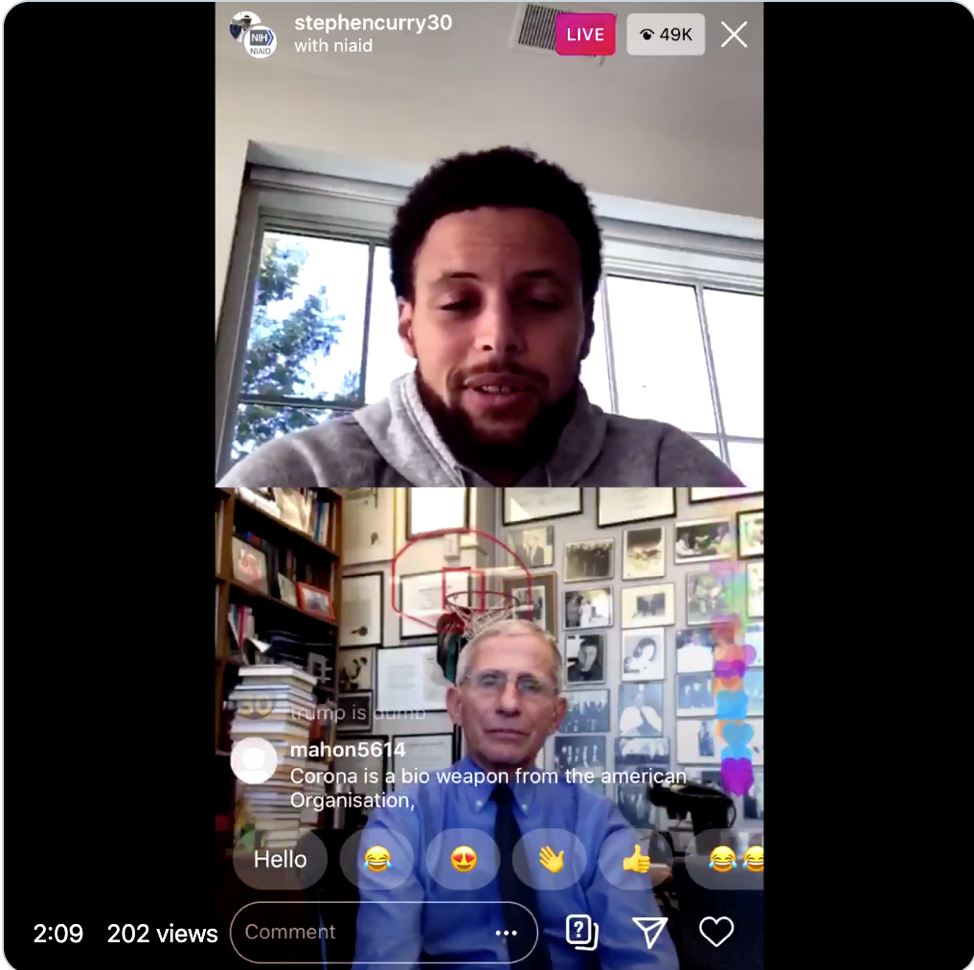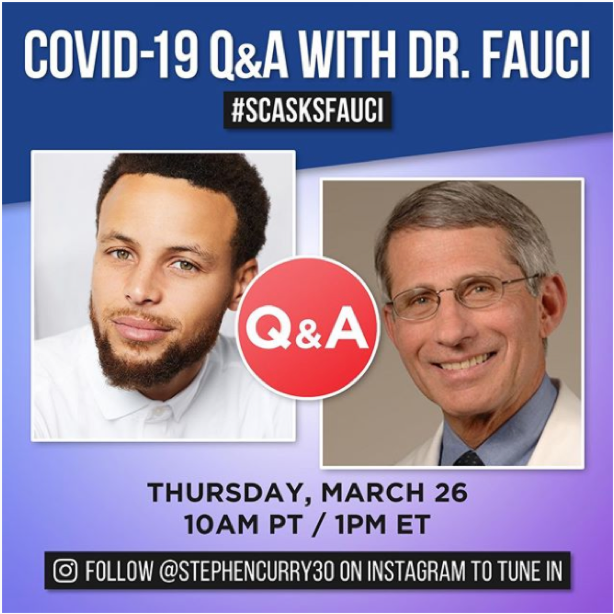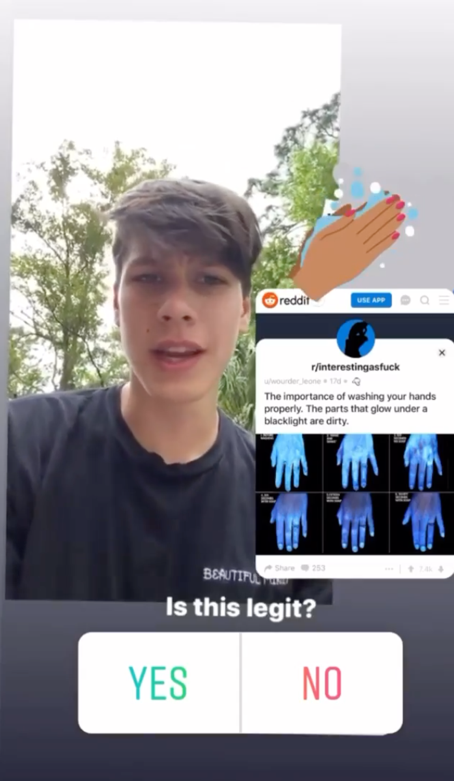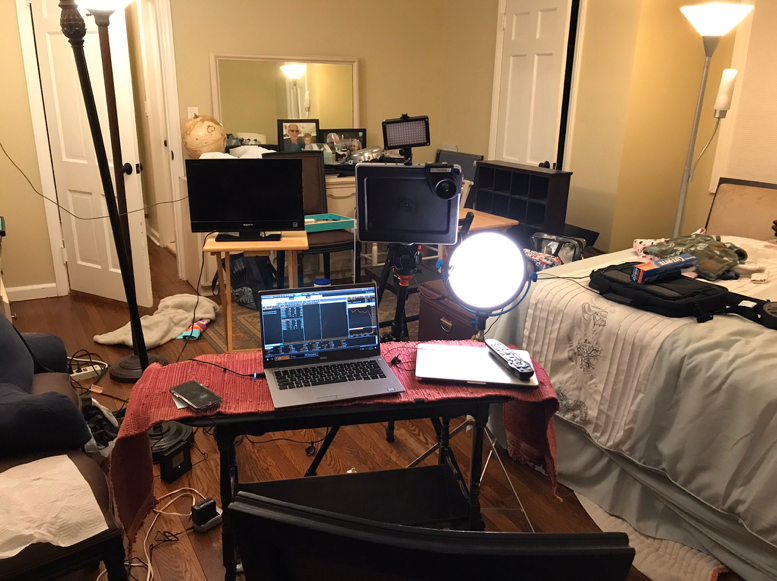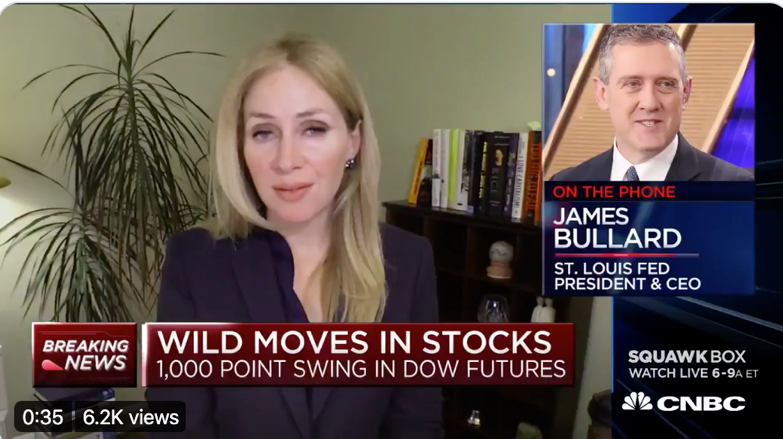 Covering COVID-19 is a daily Poynter briefing about journalism and coronavirus, written by senior faculty Al Tompkins. Sign up here to have it delivered to your inbox every weekday morning.
Covering COVID-19 is a daily Poynter briefing about journalism and coronavirus, written by senior faculty Al Tompkins. Sign up here to have it delivered to your inbox every weekday morning.
A shocking video from an emergency room doctor
The New York Times published a video in which an emergency room doctor takes us on a video tour of life in her hospital in Queens.
She acknowledged that she might get in trouble for this, but what you see (without ever seeing patient faces) is alarming. For example, she showed what she said is a refrigeration truck for bodies of people who have died from COVID-19. City officials say 13 people have died of the virus at Elmhurst Hospital, where the video was recorded.
The doctor said she has worn the same mask all day and, in some cases, for multiple days, but that she should be changing masks after every patient.
On Thursday, Elmhurst said it was transferring non-coronavirus patients to other hospitals so Elmhurst’s 545 beds could be dedicated just to COVID-19 cases.
For all the reporting that journalists have done trying to document conditions inside U.S. hospitals, the Times video stands alone as a first-person glimpse behind hospital doors. Understandably, hospitals must be concerned with patient privacy, but this kind of access is what the public needs to understand the dimensions of the problems hospitals face.
It will surprise nobody if these kinds of videos begin leaking to journalists. Now is a good time to consider the legal and ethical considerations you would weigh when deciding whether and how you would publish or air video that was captured without hospital permission.
In addition to patient privacy issues, unless journalists themselves somehow captured a video, there would have to be some way to verify its contents. You may also have to consider whether you would use a video without identifying who captured it.
What journalists can learn from Dr. Fauci’s Instagram interview with Steph Curry
My colleague Tom Jones alerted you to NBA star Steph Curry’s Q&A with Dr. Anthony Fauci yesterday and how Dr. Fauci, the nation’s most respected expert on epidemics, is using nontraditional means to reach wider audiences. Journalists could mimic both the NBA star and the doctor on this one.
Curry has 30 million Instagram followers. You can imagine that a lot of them are probably young males, a target audience that mainstream journalism outlets covet but usually find to be unreachable. The live interview drew more than 40,000 viewers, not including replays. Curry said he wanted to reach young people with the message that they can asymptomatically spread the virus, especially to older people.
The National Institute of Allergy and Infectious Diseases was smart to add a link and promotion to the interview on its Instagram page, too.
Journalists could learn from Steph Curry by reaching out to social media stars with massive young audiences to offer important reporting to audiences who might otherwise never find it. And who knows what the residual benefit might be after this crisis passes.
For a peek at what this might look like, explore Poynter’s work with our MediaWise project, much of which is aimed at high school students. What they are doing could appeal to a much wider audience (as they are demonstrating themselves with new projects for first-time voters and seniors).
MediaWise trains and publishes the work of high school students who have been fact-checking rumors and misinformation about the coronavirus.
This is a great example of a fact-check about a widely circulated image of what is said to show properly and improperly washed hands. The story tracks down the origin of the image, documents whose hands are in it and whether blacklights can show what the image claims to be documenting. It is all produced in a fast-moving Instagram-friendly way with a relaxed style, but teaches how to document, think critically and then confirm the accuracy of a post.
It is a great marriage of journalism and a user-friendly style. In that way, it is exactly what Steph Curry is doing with Dr. Fauci.
Shelter at work, not at home
The International News Media Association sent me this story that could be a precursor to what Americans will do next.
In South Korea, employees are setting up tents and isolating themselves at work, rather than going home at all. The linked story focuses on a production and printing plant for newspapers where two dozen workers have set up what looks like a campsite in hallways, complete with tents.
Are liquor stores essential businesses?
What is and is not “essential” depends on where you live. It is up to state and local governments to decide. Here is a running list of 17 such state-issued orders. You will see there is some disagreement.
In Wisconsin, liquor stores have been deemed “essential.” One liquor store owner told WISN-TV, “It’s like December. It’s like Christmastime. People are out buying everything.”
Delaware is one of several other states that allowed liquor stores to stay open.
In Denver, the mayor included marijuana dispensaries in the “essential” category, along with liquor stores.
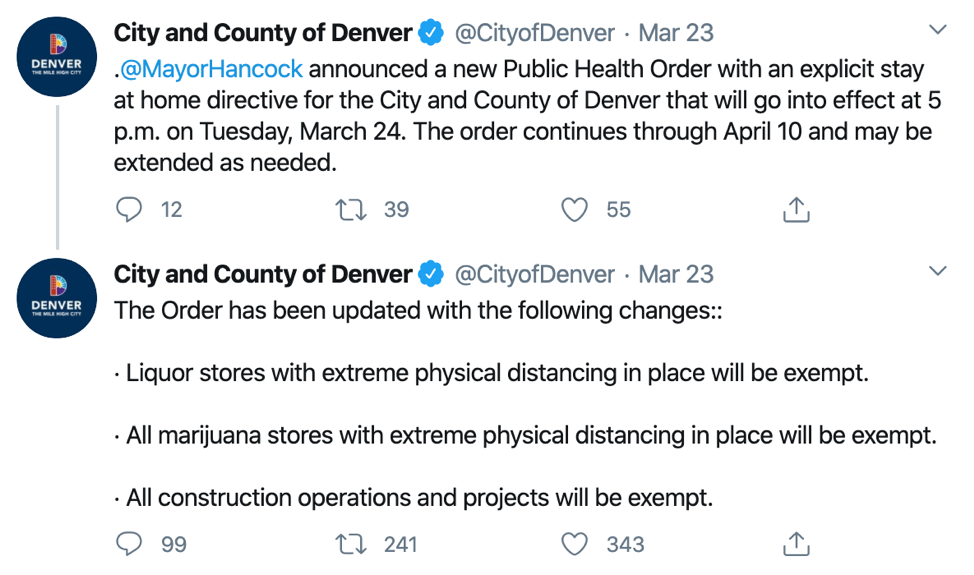
A screenshot of the City and County of Denver’s announcement on Twitter that liquor stores and dispensaries will remain open, despite stay-at-home measures
In Pennsylvania, the state allowed medical marijuana dispensaries to stay open but closed liquor stores. So far, Pennsylvania is the only state that has issued a stay-at-home order but closed liquor stores.
CNN said that order caused a rush on liquor stores:
The sudden shutdown caused sales to soar in Pennsylvania. On March 16, the same day the state announced all liquor stores would shutter by 9 p.m. the next day, there was almost $30 million in sales across nearly 600 liquor stores — perhaps the highest-earning day recorded, according to the Pennsylvania Liquor Control Board.
Vice took a deeper dive beyond the “I would like a nice bottle of wine with dinner tonight” shopper. It points to people who are alcohol-dependent and raises the issue of how a total liquor store shutdown could cause real health issues for that population.
By the way, there is still an election cycle to cover
My friends at PolitiFact have assembled a collection of ways the coronavirus is affecting the election cycle, including new dates for Democratic primary elections.
PolitiFact is also looking into how the virus might affect the November election, including whether people will be more likely to vote absentee.
Other major considerations:
- The coronavirus pandemic has raised the possibility that voting in person could still be unsafe by the general election in November. Mail balloting could be a solution.
- Five states conduct all elections by mail, while about two-thirds offer an absentee ballot to any voter without an excuse. In about one-third of states, an excuse is required.
- Absentee voting can be more convenient for voters and keeps them away from potentially sick people, but it can have disadvantages, including voter errors.
- Many states would need to change laws or ramp up their capabilities to move to predominantly mail elections.
Farm to porch
The people who a few weeks ago were selling food at your local farmers market are working on new ways to keep going. Some are turning into delivery services who will leave fresh food on your doorstep. Reuters reported:
Farmers said they had supplies and were seeing an uptick in demand for home deliveries in areas where grocery delivery services like Instacart and Amazon.com’s AmazonFresh are not widely available.
“We’re finding that these farms have a lot of opportunity to step in and prove their value now,” said Dan Miller, chief executive of Steward, a company that provides capital to sustainable farms and helps them set up e-commerce platforms.
Neighborhood social-distancing stretches into the street
Boyd Huppert at KARE-11 Minneapolis says the virus that threatens to separate us from others is bringing some people closer. In St. Paul a whole neighborhood is getting together for daily exercise.
It started with a woman who grew up in Japan, where neighborhood exercises are common. Now her neighborhood chalks off circles on the street, where people stand six feet apart and together, they stretch and smile.
How we are working
I have been so interested in how journalists are doing their work from home and still delivering a professional front. Becky Quick, a CNBC anchor, posted photos of her home “studio” to Twitter. When you see how a bedroom lit by four lamps looks on the air, it is fairly astonishing.
We’ll be back Monday with a new edition of Covering COVID-19. Sign up here to get it delivered right to your inbox.
Al Tompkins is senior faculty at Poynter. He can be reached at atompkins@poynter.org or on Twitter, @atompkins.

